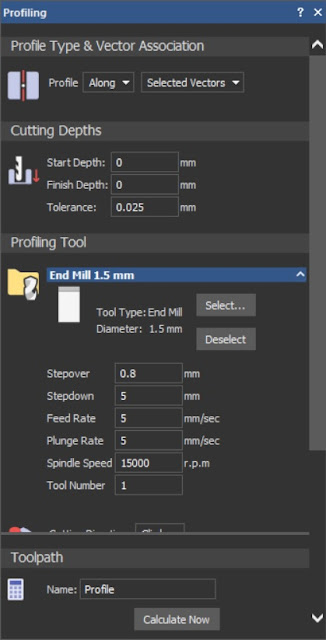First, I needed to visualize the design and get the actual measurements of the object, I used sketchup to create the initial 3d model!
With the 3d model in mind, I created the gcode in ArtCam. I again used the settings in engraving acrylic to generate the gcode.
Using the universal gcode sender, I began to create the object.
I encountered several untoward incidences while machining, I also made several miscalculation so I had to stop the machining in between. A major disaster I encountered was the fluctuation of electricity, and destroyed the wood surface at depth of 20mm so I had to stop and smoothen the surface again. After waiting for power to stabilize, I encountered another problem, the power supply of the spindle started to generate rf signals that affects the operation of the grbl shield(a small emp bomb exploded inside my cnc control box), I suspected that this was the effect of the fluctuation from the electrical outlet. Going through the process of resmoothing the surface again is not a good idea anymore so I had to save what has been done, it was a painful process but it worked but leaving several imperfections in the finished product but the imperfections are minimal.
Overall, my weekend project was success. I learned a lot from this project. The wood block I used was too thick for the cnc to cut the edges that is because the drill bit I used was only about 2.5" long while the wood is about 5". Maybe I should take it to the furniture shop to have it removed. Sans the errors encountered, the machining process took about 2 hours with setting used, but it can be optimized and it could take 30minutes only because pine wood is a lot softer than acrylic and artcam calculated the cutting depth to be 5mm, at 5mm depth, there is almost no vibration in the machine when the 500W spindle is set at 12000rpm.














